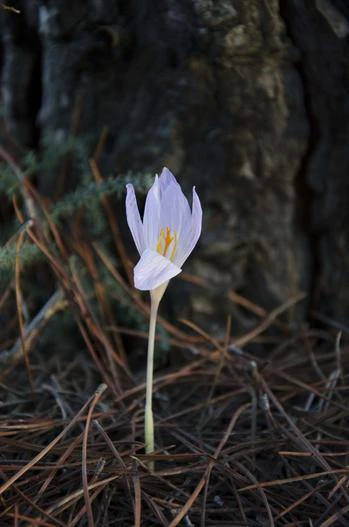Salzmann’s Crocus
(Crocus salzmannii)
Salzmann’s Crocus (Crocus salzmannii)
/
/

Bea
CC BY-SA 2.0
Image By:
Bea
Recorded By:
Copyright:
CC BY-SA 2.0
Copyright Notice:
Photo by: Bea | License Type: CC BY-SA 2.0 | License URL: https://creativecommons.org/licenses/by-sa/2.0 | Uploader: Triplecaña | Publisher: Wikipedia Commons



Estimated Native Range
Climate Requirements
| • Precipitation | 17" - 20" |
| • High Temp. | 70°F - 90°F |
| • Low Temp. | 22°F - 40°F |
Summary
Crocus salzmannii, commonly known as Salzmann’s Crocus or Spring Crocus, is a perennial herb that is native to the Western Mediterranean region, particularly thriving in open woodlands, grassy slopes, and alpine meadows. It exhibits a moderate growth rate, reaching a height and width of approximately 0.3-0.5 feet (0.09-0.15 meters). This crocus is celebrated for its striking blue or purple flowers that emerge in early spring, often before the last snows have melted, adding a splash of color to the garden when little else is in bloom. The flowers are quite showy, with each bloom consisting of six petal-like tepals surrounding bright orange stamens.
Salzmann’s Crocus is valued for its early flowering period and is commonly used in rock gardens, borders, and as a naturalizing plant in grassy areas. It is also suitable for underplanting deciduous trees and shrubs. This crocus prefers full sun to part shade and grows best in well-drained soils, including clay, loam, or sandy types. It requires medium amounts of water and benefits from a dry period during the summer when the plant is dormant. While generally low-maintenance, it is important to protect the bulbs from squirrels and other digging animals. Salzmann’s Crocus is not known for significant disease or pest problems, but it can be susceptible to rot if planted in overly wet conditions.CC BY-SA 4.0
Salzmann’s Crocus is valued for its early flowering period and is commonly used in rock gardens, borders, and as a naturalizing plant in grassy areas. It is also suitable for underplanting deciduous trees and shrubs. This crocus prefers full sun to part shade and grows best in well-drained soils, including clay, loam, or sandy types. It requires medium amounts of water and benefits from a dry period during the summer when the plant is dormant. While generally low-maintenance, it is important to protect the bulbs from squirrels and other digging animals. Salzmann’s Crocus is not known for significant disease or pest problems, but it can be susceptible to rot if planted in overly wet conditions.CC BY-SA 4.0
Plant Description
- Plant Type: Herb
- Height: 0.3-0.5 feet
- Width: 0.3-0.5 feet
- Growth Rate: Moderate
- Flower Color: Blue, Purple
- Flowering Season: Spring
- Leaf Retention: Deciduous
Growth Requirements
- Sun: Full Sun, Part Shade
- Water: Medium
- Drainage: Medium
Common Uses
Border Plant, Butterfly Garden, Low Maintenance, Rock Garden
Natural Habitat
Native to open woodlands, grassy slopes, and alpine meadows in the Western Mediterranean region
Other Names
Common Names: Spring Crocus
Scientific Names: Crocus salzmannii, Crociris iridiflora, Crociris speciosa, Crocus byzantinus, Crocus clusii f. mauritii, Crocus clusii var. mauritii, Crocus nudiflorus, Crocus salzmannianus, Crocus salzmannii var. coloratus
GBIF Accepted Name: Crocus salzmannii